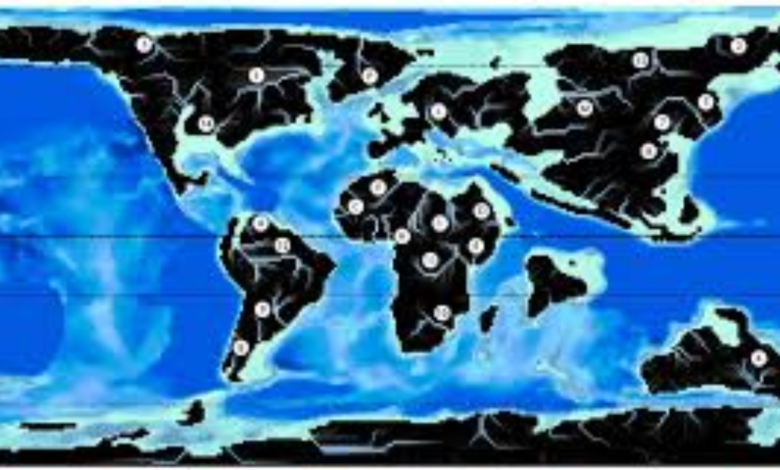21.8 10.9 17.7 21.1 10.9 28.6 10.2 6.8: Exploring Patterns and Possibilities

Numbers surround us, shaping how we perceive the world. From financial indicators to natural patterns, numerical sequences like 21.8, 10.9, 17.7, 21.1, 10.9, 28.6, 10.2, and 6.8 carry hidden meanings, waiting to be unlocked. This unique series invites curiosity—could it be data from a scientific study, an artistic arrangement, or a random set? Let’s embark on a journey to uncover its potential significance, real-world applications, and underlying patterns.
Decoding the Sequence: 21.8, 10.9, 17.7, 21.1, 10.9, 28.6, 10.2, 6.8
This series of numbers is fascinating because of its structure and variety. Each number appears distinct, yet the repetition of 10.9 suggests a deeper significance. Let’s explore this sequence’s characteristics and its possible connections to science, art, mathematics, and daily life.
Why Are Sequences Important?
Numerical sequences are critical in various fields because they allow us to:
- Predict Trends: Understanding patterns helps forecast changes.
- Analyze Data: Sequences often encode valuable insights.
- Create Systems: Many technologies rely on numeric coding.
The sequence in question could be part of an algorithm, a representation of time-series data, or even a key to a hidden problem.
Applications Across Various Fields
1. Scientific Contexts
Scientists frequently encounter similar number sequences in their work:
- Climate Research: Numbers could reflect temperature variations over a week or month.
- Astronomy: Star magnitudes, planet distances, or orbital velocities.
- Physics and Chemistry: Measurement data like atomic mass or chemical concentrations.
For instance, 21.8, 17.7, and 28.6 might indicate peaks in experimental readings, while 10.2 and 6.8 reflect baseline levels.
2. Business and Finance
Economic and financial systems rely heavily on interpreting data series:
- Sales and Revenue Trends: Each value may represent daily, weekly, or monthly sales.
- Market Analysis: Tracking fluctuations in stock indices or commodity prices.
- Budgeting Patterns: Understanding expenditure and income over time.
If the numbers represent sales data, 21.8 and 28.6 could highlight peak sales days, while 6.8 suggests off-peak activity.
3. Artistic and Cultural Relevance
Sequences also find a home in artistic and cultural representations:
- Music and Poetry: The numbers could serve as rhythmic structures or syllable counts.
- Design and Architecture: Proportional dimensions or layout guides.
- Cultural Symbolism: Numbers hold symbolic meanings in various traditions.
For example, 10.9 repeated twice might symbolize balance or recurrence in art or literature.
4. Patterns in Daily Life
Even outside of specialized fields, sequences play a role in daily activities:
- Fitness Tracking: Steps taken or calories burned across a period.
- Weather Reports: Temperatures or rainfall measurements.
- Health Monitoring: Blood pressure or glucose readings over time.
A health tracker might log this sequence as fluctuations in heart rate during exercise.
Numerical Analysis of the Sequence
Detecting Progressions
Does the sequence follow a mathematical pattern? Here’s what analysis reveals:
- Linear Growth: The numbers do not increase or decrease at regular intervals.
- Repetition: 10.9 appears twice, suggesting periodicity or importance.
- Peaks and Troughs: High values like 28.6 contrast with low ones like 6.8.
Statistical Relationships
Analyzing relationships between numbers can be insightful:
- Mean (Average): Adding all numbers (127) and dividing by 8 yields 15.875.
- Range: The difference between the highest (28.6) and lowest (6.8) values is 21.8.
- Standard Deviation: This calculates variability, highlighting how spread out the numbers are.
Such insights help contextualize the sequence, offering clues to its significance.
Visualization for Deeper Insights
Visual tools can make patterns clearer:
- Line Graphs: Show trends over time if numbers represent chronological data.
- Bar Charts: Highlight the distribution of values.
- Pie Charts: Represent proportions if the sequence is part of a whole.
Creating visual representations can turn raw data into actionable knowledge.
Real-World Examples of Similar Sequences
Weather Monitoring
Weather agencies record daily temperatures or precipitation levels, often resulting in sequences like this. For example:
- Day 1: 21.8°C
- Day 2: 10.9°C
- Day 3: 17.7°C
- Day 4: 21.1°C
This could reflect a week’s worth of data, showcasing seasonal changes.
Fitness and Health Apps
Wearable fitness devices collect data points like these:
- 21.8 km walked on the first day, followed by 10.9 km the next.
Such sequences help track performance and set goals.
Economic Forecasting
In financial markets, such sequences might represent:
- Daily Stock Prices or fluctuations in currency exchange rates.
- Sales Figures: Peaks like 28.6 could coincide with major promotional campaigns.
Symbolism in Numbers
Numbers often hold deeper, symbolic meanings:
- 21.8: Might signify maturity or completion in some cultures.
- 10.9: Repeatedly symbolizes duality or balance.
- 28.6: High values often represent abundance or achievement.
Cultural and historical contexts can add layers of interpretation to numerical patterns.
Actionable Tips for Decoding Sequences
1. Define the Context
Always start by identifying where the sequence originates. This helps narrow down its purpose.
2. Use Software Tools
Leverage platforms like Excel or Python for detailed analysis and visualization.
3. Seek Expert Insights
If the sequence is part of a specialized field, consulting experts can unlock its meaning.
FAQs
What could the sequence 21.8, 10.9, 17.7, 21.1, 10.9, 28.6, 10.2, 6.8 represent?
It might be scientific, financial, or personal data. The exact interpretation depends on the context.
Why is 10.9 repeated in the sequence?
Repetition often indicates periodic events or emphasizes the importance of specific values.
How can I find patterns in numerical data?
Use statistical tools, graphing software, and logical reasoning to detect trends or relationships.
Are there hidden meanings in numbers like these?
Yes, depending on cultural, scientific, or artistic contexts, numbers can carry symbolic or practical significance.
How can this sequence be visualized?
Using line graphs, bar charts, or scatter plots can make trends and relationships more apparent.
Conclusion
The sequence 21.8, 10.9, 17.7, 21.1, 10.9, 28.6, 10.2, 6.8 reflects the beauty and mystery of numbers. From science to art, business to daily life, such patterns offer endless opportunities for exploration and discovery. By analyzing its potential origins and meanings, we bridge the gap between abstract numbers and tangible insights. This sequence, like all data, invites us to ask questions, seek answers, and embrace the power of patterns.
Suggestions for Inbound Links
- “How to Analyze Data Trends Efficiently”
- “Numerical Sequences in Art and Science”





